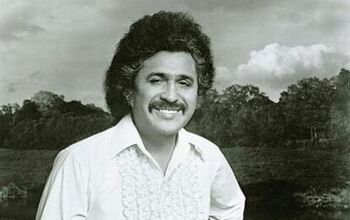UAW Announces Another Strike Expansion

The United Auto Workers (UAW) has decided to broaden its strike on Friday. This week’s targets include Ford’s Chicago Assembly Plant, responsible for the Explorer and Lincoln Aviator, and General Motors’ Lansing Delta Township Assembly, responsible for the Chevrolet Traverse and Buick Enclave.
Stellantis managed to dodge the bullet this time around, with union leadership citing progress made in contract negotiations. It seems the union liked what the automaker had to say regarding the right to strike over plant closures and cost-of-living adjustments. Ford managed to achieve something similar last week. But with the UAW hoping to pit the companies against each other by subjecting them all to strikes, it was inevitable that Blue Oval would be back under union scrutiny.
“We are excited about this momentum at Stellantis and hope it continues,” stated UAW President Shawn Fain.
Fain said about 7,000 employees would be taking part in the latest round of work stoppages, joining roughly 18,300 workers who are currently on strike for the union. Last week, the UAW expanded its strike to 38 parts and distribution locations owned by GM and Stellantis. The plan has been to gradually turn up the heat on the industry, allowing the union to stretch its strike budget a little further while drawing media attention to its demands. By incorporating all three Detroit automakers, something previous eras of union leadership opted against, the UAW is also hoping to play them off each other as contract negotiations continue.
While Friday’s talks were said to be frantic, with the union claiming a lot of last-minute chatter coming from the industry, the plan was to have the 7,000 employees working in Chicago and Lansing walk off at noon if no deal had been reached.
Though automakers have issued public complaints that the union has been slow to respond to updated proposals. They’re also not particularly keen on the UAW’s updated tactics. Last week, CNBC reported that the industry was “questioning” the union’s strike motives after messages were leaked from UAW communications director Jonah Furman claiming that the union was causing “recurring reputations damage and operational chaos.”
Automakers, supported by corporate media, attempted to frame the above as scandalous — even though these have been the tactics of unionized labor for over a century.
“It’s now clear that the UAW leadership has always intended to cause months-long disruption, regardless of the harm it causes to its members and their communities,” General Motors said in an emailed statement to CNBC. “The leaked information calls into question who is actually in charge of UAW strategy and shows a callous disregard for the seriousness of what is at stake.”
Stellantis called the above “incredibly disturbing” and claimed it indicated that the “UAW’s approach to these talks is not in the best interest of the workforce.”
“We are disappointed that it appears our employees are being used as pawns in an agenda that is not intended to meet their needs,” Stellantis stated.
I suppose some of the allegations that the union is perpetually available to continue in good-faith negotiations could stick if the UAW has indeed been slow to respond with counter-proposals. But this is how the game has always been played by both sides. The whole thing is an optics war with each group hoping to win the hearts and minds of the American people before the other side blinks.
But that could take a while, as the UAW has made some big demands.
We’ve covered them before. However, the most important items likely include a 40-percent pay increase over the next four years (the same pay bump industry CEOs have enjoyed. This demand was later walked back to 36 percent), the restoration of traditional pensions, cost-of-living adjustments, and the elimination of compensation tiers that keep newer hires from being treated as fully fledged employees.
Much of the above stems from how much was given up during previous rounds of bargaining. Today’s union leaders are hoping to move away from the corruption of their predecessors and win back some of the concessions workers made over the last several decades. The worst of this took place in the run-up to the 2008 automotive bailout when the industry was financially crippled and laying off employees in large numbers.
While layoffs have also been relatively common over the last few years, industry finances are comparatively healthy. Even as production volumes plunged and news broke that the average American household could no longer afford to purchase brand-new vehicles, domestic automakers and dealerships enjoyed extremely high levels of profitability. The phenomenon has been something the UAW has brought up repeatedly as it hopes to garner public support.
[Image: UAW]
Become a TTAC insider. Get the latest news, features, TTAC takes, and everything else that gets to the truth about cars first by subscribing to our newsletter.

A staunch consumer advocate tracking industry trends and regulation. Before joining TTAC, Matt spent a decade working for marketing and research firms based in NYC. Clients included several of the world’s largest automakers, global tire brands, and aftermarket part suppliers. Dissatisfied with the corporate world and resentful of having to wear suits everyday, he pivoted to writing about cars. Since then, that man has become an ardent supporter of the right-to-repair movement, been interviewed on the auto industry by national radio broadcasts, driven more rental cars than anyone ever should, participated in amateur rallying events, and received the requisite minimum training as sanctioned by the SCCA. Handy with a wrench, Matt grew up surrounded by Detroit auto workers and managed to get a pizza delivery job before he was legally eligible. He later found himself driving box trucks through Manhattan, guaranteeing future sympathy for actual truckers. He continues to conduct research pertaining to the automotive sector as an independent contractor and has since moved back to his native Michigan, closer to where the cars are born. A contrarian, Matt claims to prefer understeer — stating that front and all-wheel drive vehicles cater best to his driving style.
More by Matt Posky
Latest Car Reviews
Read moreLatest Product Reviews
Read moreRecent Comments
- Bd2 Lexus is just a higher trim package Toyota. ^^
- Tassos ONLY consider CIvics or Corollas, in their segment. NO DAMNED Hyundais, Kias, Nissans or esp Mitsus. Not even a Pretend-BMW Mazda. They may look cute but they SUCK.I always recommend Corollas to friends of mine who are not auto enthusiasts, even tho I never owed one, and owned a Civic Hatch 5 speed 1992 for 25 years. MANY follow my advice and are VERY happy. ALmost all are women.friends who believe they are auto enthusiasts would not listen to me anyway, and would never buy a Toyota. They are damned fools, on both counts.
- Tassos since Oct 2016 I drive a 2007 E320 Bluetec and since April 2017 also a 2008 E320 Bluetec.Now I am in my summer palace deep in the Eurozone until end October and drive the 2008.Changing the considerable oils (10 quarts synthetic) twice cost me 80 and 70 euros. Same changes in the US on the 2007 cost me $219 at the dealers and $120 at Firestone.Changing the air filter cost 30 Euros, with labor, and there are two such filters (engine and cabin), and changing the fuel filter only 50 euros, while in the US they asked for... $400. You can safely bet I declined and told them what to do with their gold-plated filter. And when I changed it in Europe, I looked at the old one and it was clean as a whistle.A set of Continentals tires, installed etc, 300 EurosI can't remember anything else for the 2008. For the 2007, a brand new set of manual rec'd tires at Discount Tire with free rotations for life used up the $500 allowance the dealer gave me when I bought it (tires only had 5000 miles left on them then)So, as you can see, I spent less than even if I owned a Lexus instead, and probably less than all these poor devils here that brag about their alleged low cost Datsun-Mitsus and Hyundai-Kias.And that's THETRUTHABOUTCARS. My Cars,
- NJRide These are the Q1 Luxury division salesAudi 44,226Acura 30,373BMW 84,475Genesis 14,777Mercedes 66,000Lexus 78,471Infiniti 13,904Volvo 30,000*Tesla (maybe not luxury but relevant): 125,000?Lincoln 24,894Cadillac 35,451So Cadillac is now stuck as a second-tier player with names like Volvo. Even German 3rd wheel Audi is outselling them. Where to gain sales?Surprisingly a decline of Tesla could boost Cadillac EVs. Tesla sort of is now in the old Buick-Mercury upper middle of the market. If lets say the market stays the same, but another 15-20% leave Tesla I could see some going for a Caddy EV or hybrid, but is the division ready to meet them?In terms of the mainstream luxury brands, Lexus is probably a better benchmark than BMW. Lexus is basically doing a modern interpretation of what Cadillac/upscale Olds/Buick used to completely dominate. But Lexus' only downfall is the lack of emotion, something Cadillac at least used to be good at. The Escalade still has far more styling and brand ID than most of Lexus. So match Lexus' quality but out-do them on comfort and styling. Yes a lot of Lexus buyers may be Toyota or import loyal but there are a lot who are former GM buyers who would "come home" for a better product.In fact, that by and large is the Big 3's problem. In the 80s and 90s they would try to win back "import intenders" and this at least slowed the market share erosion. I feel like around 2000 they gave this up and resorted to a ton of gimmicks before the bankruptcies. So they have dropped from 66% to 37% of the market in a quarter century. Sure they have scaled down their presence and for the last 14 years preserved profit. But in the largest, most prosperous market in the world they are not leading. I mean who would think the Koreans could take almost 10% of the market? But they did because they built and structured products people wanted. (I also think the excess reliance on overseas assembly by the Big 3 hurts them vs more import brands building in US). But the domestics should really be at 60% of their home market and the fact that they are not speaks volumes. Cadillac should not be losing 2-1 to Lexus and BMW.
- Tassos Not my favorite Eldorados. Too much cowbell (fins), the gauges look poor for such an expensive car, the interior has too many shiny bits but does not scream "flagship luxury", and the white on red leather or whatever is rather loud for this car, while it might work in a Corvette. But do not despair, a couple more years and the exterior designs (at least) will sober up, the cowbells will be more discreet and the long, low and wide 60s designs are not far away. If only the interiors would be fit for the price point, and especially a few acres of real wood that also looked real.


































Comments
Join the conversation
I did not notice, did they mention climate change? How they are going to fight climate change, racism and gender discrimination. I mean collective Big 3.
GM, Ford and Stellantis have significant oversupply of product sitting on dealer lots and banked up in holding yards across the country. Big 3 management is taking advantage of UAW's action to bring their inventories inline to what they deem reasonable. When you have models pushing 6 months of supply having your productions lines shut down by a strike is not something that's going to worry you. UAW does not have any advantages here, but they are directly impacting the financial well being of their membership. Who will be the first to blink? Those UAW members waving the signs around and receiving "strike pay" that is, what, 20% of their wages? UAW is screwing up this time around.